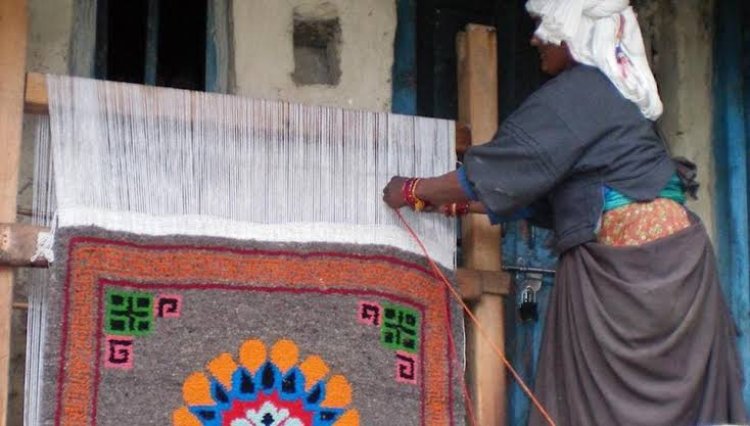Tribal women weave Tibetan carpet for living

Parlakhemundi: The ancient hand-woven Tibetan rug is no longer a monopoly business among the community who are settled in Odisha's Gajapati district.
Several women from the indigenous Saora community a particularly vulnerable tribal group (PVTG) -- have started the art of weaving rugs.
Two Tibetan women artisans had trained 17 tribals on the art of weaving from March-June. After the skill development training, the Soura women have started to weave the carpets on their own at Manikapur village of Mohana block, around 250 km southwest of Bhubaneswar.
The craft dates back to hundreds of years ago and was practised by the nomad communities in Tibet. The technique of the rug is different from the Persian or the Turkish methods. The handwoven rug is traditionally made from the wool of sheep, but cotton warps are common nowadays. It can be used on floors, wall hanging, saddles and seating carpet.
The woollen carpets are decorated with the designs of birds, dragons and other scenes of nature and sell from Rs 5,000-25,000 per piece.
The Soura Development Agency, which works for the development of the PVTG, had facilitated the tribal women to take the training on making of the carpet from the Tibetan women. A carpet weaving unit will start functioning at Jagannathpur, Nilakuti and Labarsingh areas soon with around 14 Soura women.
The Saoras are one of the most ancient tribes of India and the oldest in Odisha, and they reside in Ganjam, Gajapati, Rayagada and Koraput districts mainly. According to the 2011 census, their population is 5.35 lakh in the state.
"The main objective of the project is to provide livelihood and support to the tribal women," district collector Lingraj Panda said.
"At the same time, the traditional hand-woven carpet, which is a dying art form among the young Tibetans, will be kept alive through the tribal women."
Jamphel, a Tibetan settler in Chandragiri, was elated at the efforts to revive the art, in which the young generation is not keen to participate as it's quite labour intensive.
Kumari Rait, one of the trained women of Kamalapur, said they procured the raw materials like wool and other silk yarns from Ludhiana, Punjab, initially to weave the carpet.
Now, they will procure these from an agency in Berhampur town of neighbouring Ganjam district, the 20-year-old said, adding she took around 15 days to complete a carpet.
Apart from marketing on their own, the carpets made by the tribal women are supplied to the multi-purpose Tibetan cooperative society, according to Sridhar Sahu, special officer of the project.
"The society has agreed to take almost all the products as the Tibetan carpet is in high demand in the international market," he added.















































